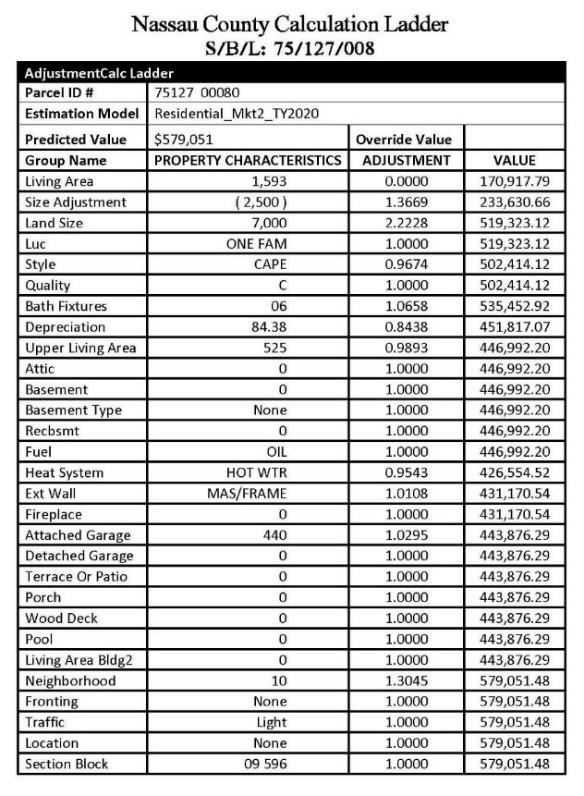Your final School and General tax bills depend on many factors over which you have no direct control. The tax rate itself and the annual budgets set by your school and other taxing jurisdictions are determined by budgetary requirements, and the assessed market value of your home is influenced by the market values of your neighbors’ properties, as well as the market values in your geographical area, school district, and county.
Nassau County uses a simple formula to calculate your property taxes:
Assessed Value (“AV”) x Tax Rate = Dollar Amount of Taxes
Challenging or protesting tax rates is beyond the scope of your property tax grievance. Your grievance – which is aimed at securing the largest property tax reduction allowed by law – must be based on lowering the assessed value of your property.
So how do you determine if your assessment is fair? Well, the onus is on you or your representative to compare the data the County has to the actual reality of your home, land, and neighborhood. Perhaps the County’s assessment is spot on, or close to 100 percent accurate, or maybe it’s wildly off. Only a close examination of the data compiled by Nassau County on your particular property will reveal which of these possibilities is true.
Examine the Data
If you visit the County’s “Ask the County Assessor” website and study your property’s Ladder Report, you can study the many adjustment factors that go into calculating the market value of your property.
Here’s what such a report looks like for a hypothetical Nassau County property:
Does the data in the “property characteristics” column correlate with reality? It’s prudent to review the County’s inventory of your property. And while the County attempts to make sure this data is accurate, it doesn’t have the workforce necessary to inspect your home to determine whether, for example, the overall quality of your home is graded properly, or whether the traffic level on your street is light or heavy. It’s up to you (or your tax representative) to reconcile the County’s data with reality. As we’ve seen in the rollout to the new Assessment, errors can and do crop up, and it’s up to you (or your tax grievance representative) to ferret out and correct every last one of them.
Claim the Exemptions to Which You’re Entitled
Making sure that you’ve filed for the appropriate property tax exemptions will maximize the savings on your property tax bill. So, make sure you’ve filed for each and every one to which you’re entitled. For example, are you a Veteran, Senior Citizen, or are on a limited income? You may be entitled to an exemption. (To learn more about these exemptions, read All the Nassau County Tax Exemptions You Should Know About).
(Please note that Maidenbaum only charges you for the savings that it achieves and will not take credit for any property tax exemptions you may have filed on your own. Maidenbaum’s work starts after your exemptions kick in.)
Do Your Due Diligence (Or Let Us Do it For You)
Nassau County tries to project what your home’s actual market value is, but it’s still a projection, which means the burden is on you – the taxpayer – to make sure that the data points used to create this projection are accurate.
Because property taxes take such a big bite out of every Nassau County homeowner’s budget, it’s critical that there be no errors, ambiguity, or other problems. So, do your homework, pore over every data point, file for the exemptions to which you’re entitled, and don’t rest until the County’s data corresponds with reality. Or – to save yourself the time and trouble, you could just contact Maidenbaum and let us do the heavy lifting. Remember: we only make money if you save money.



